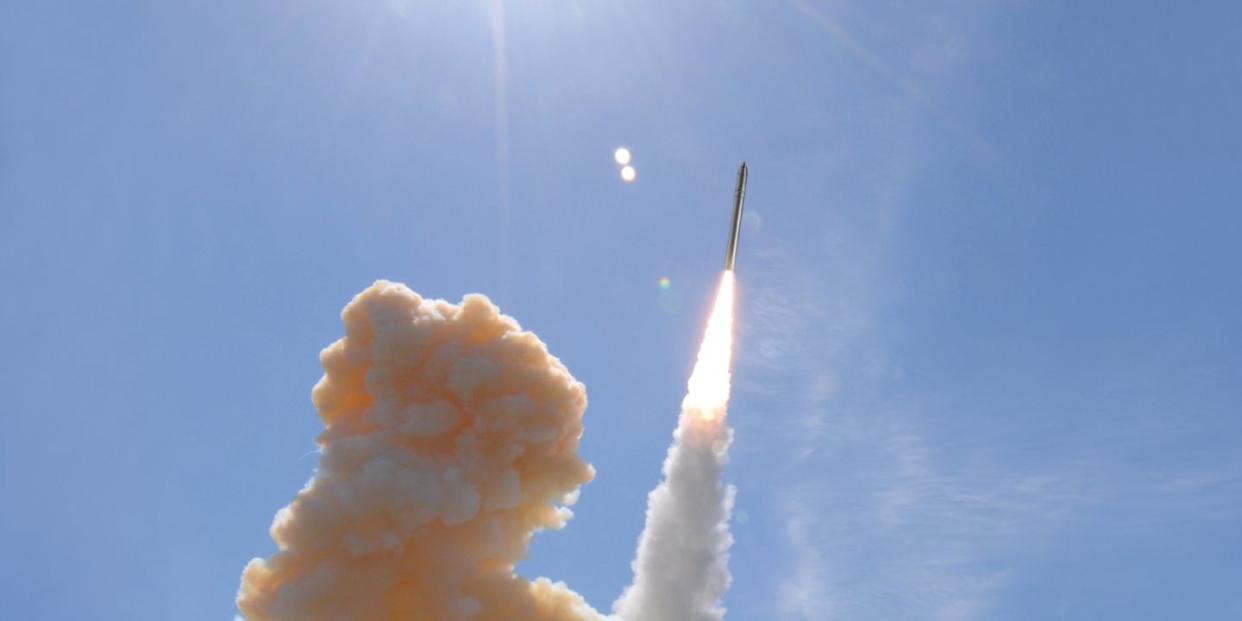Air Force Accidentally Reveals It Wants a Hypersonic Nuke

The Air Force has requested a list of future upgrades for America’s next-generation intercontinental ballistic missile (ICBM) fleet.
One technology is the ability to use an ICBM to launch a hypersonic glide weapon.
Such a weapon would have a range of thousands of miles, reach its target in minutes, and likely carry a nuclear warhead.
The U.S. Air Force may have accidentally revealed its interest in a hypersonic nuclear weapon system. The Air Force's list of future upgrades for intercontinental ballistic missiles includes technology to support a hypersonic glide weapon. Such a weapon could fly below early warning radars designed to spot incoming nuclear warheads, rocketing toward a target at Mach 5 or greater.
Dive deeper. ➡ Read best-in-class military features and get unlimited access to Pop Mech , starting now.
Per a report in Aviation Week, the Air Force’s Nuclear Weapons Center issued a Request for Information to industry for technologies that could go into the service’s next intercontinental ballistic missile (ICBM). The Air Force is preparing to replace the existing 50-year-old fleet of Minuteman III ICBMs with a new missile: the Ground-Based Strategic Deterrent (GBSD).
The GBSD (shown above) will have an open architecture allowing it to take on additional missions over the lifetime of the weapon system. Among the seven new missions or capabilities the Nuclear Weapons Center posted in the RFI: a “thermal protection system that can support [a] hypersonic glide to ICBM ranges.”
A hypersonic glide vehicle on an ICBM could have either a conventional or nuclear warhead. On one hand, as a Pentagon official explained to Aviation Week, all of the military’s hypersonic weapon systems are designed to carry conventional weapons. On the other, as a nuclear weapons expert pointed out, the listing of a hypersonic upgrade by the Nuclear Weapons Center highly suggests this new weapon would carry a nuke.

ICBMs are long-range missiles launched on ballistic trajectories. After takeoff, a missile like the American Minuteman III typically travels straight up to insert its nuclear warheads into low earth orbit. The warheads spend several minutes traveling through space, then orbits above the target. A Minuteman III warhead reenters the atmosphere at Mach 23, far above the Mach 5 threshold for hypersonic weapons.
📩 Make your inbox more awesome.
An ICBM-based hypersonic glide vehicle would follow a similar launch profile, but fall short of entering low earth orbit. As the missile reaches the upper atmosphere, it would alter its trajectory to remain in the atmosphere. Such a missile would be undetectable by early warning radars designed to detect ICBMs heading into space, literally flying under their coverage arc.
Russia actually leads the field of hypersonic ICBMs. The country announced its Avangard hypersonic weapon was operational in late 2019. Avangard is launched from a R-28 Sarmat ICBM and has a 2-megaton (2,000,000 tons of TNT) thermonuclear warhead. Avangard is designed to destroy ballistic missile defenses like those located at Fort Wainwright, Alaska.
You Might Also Like

